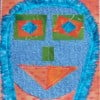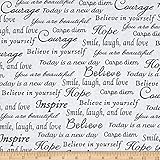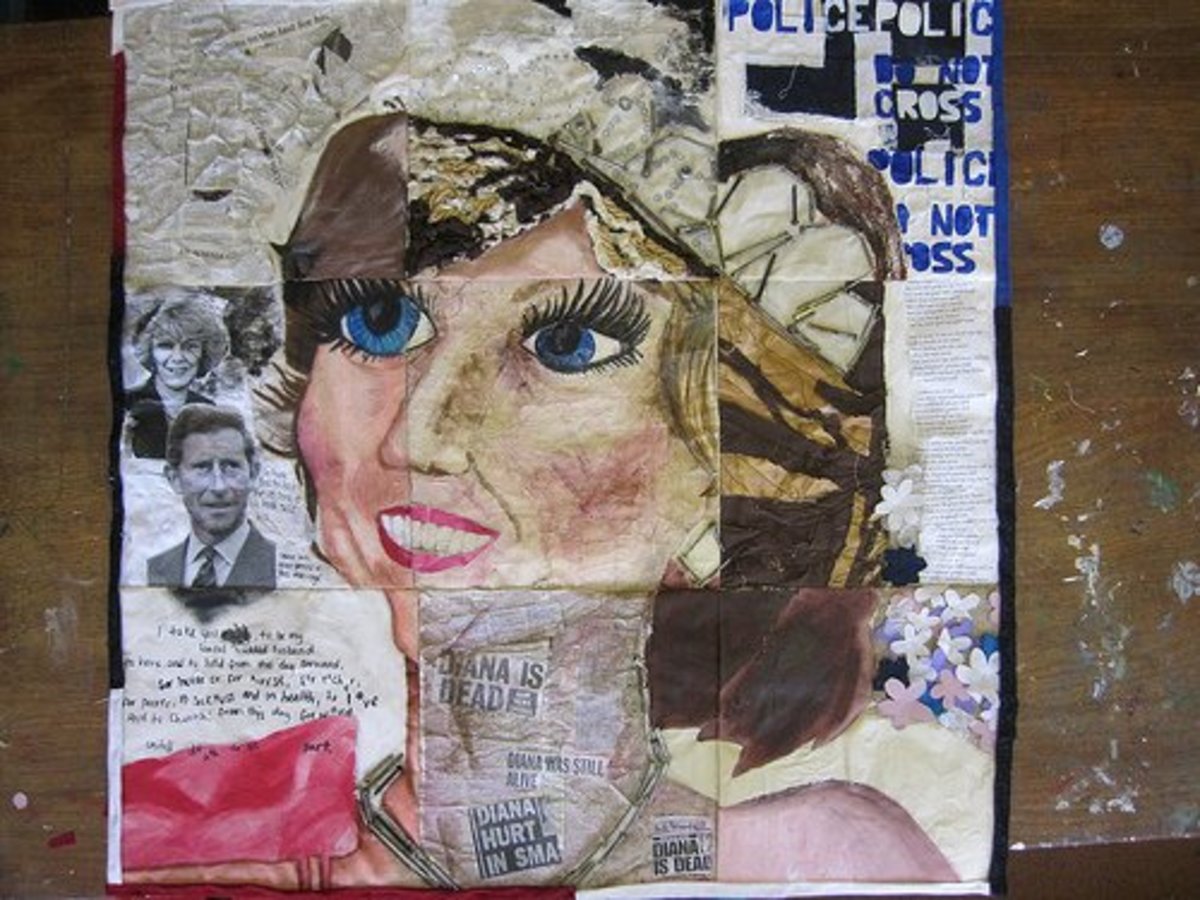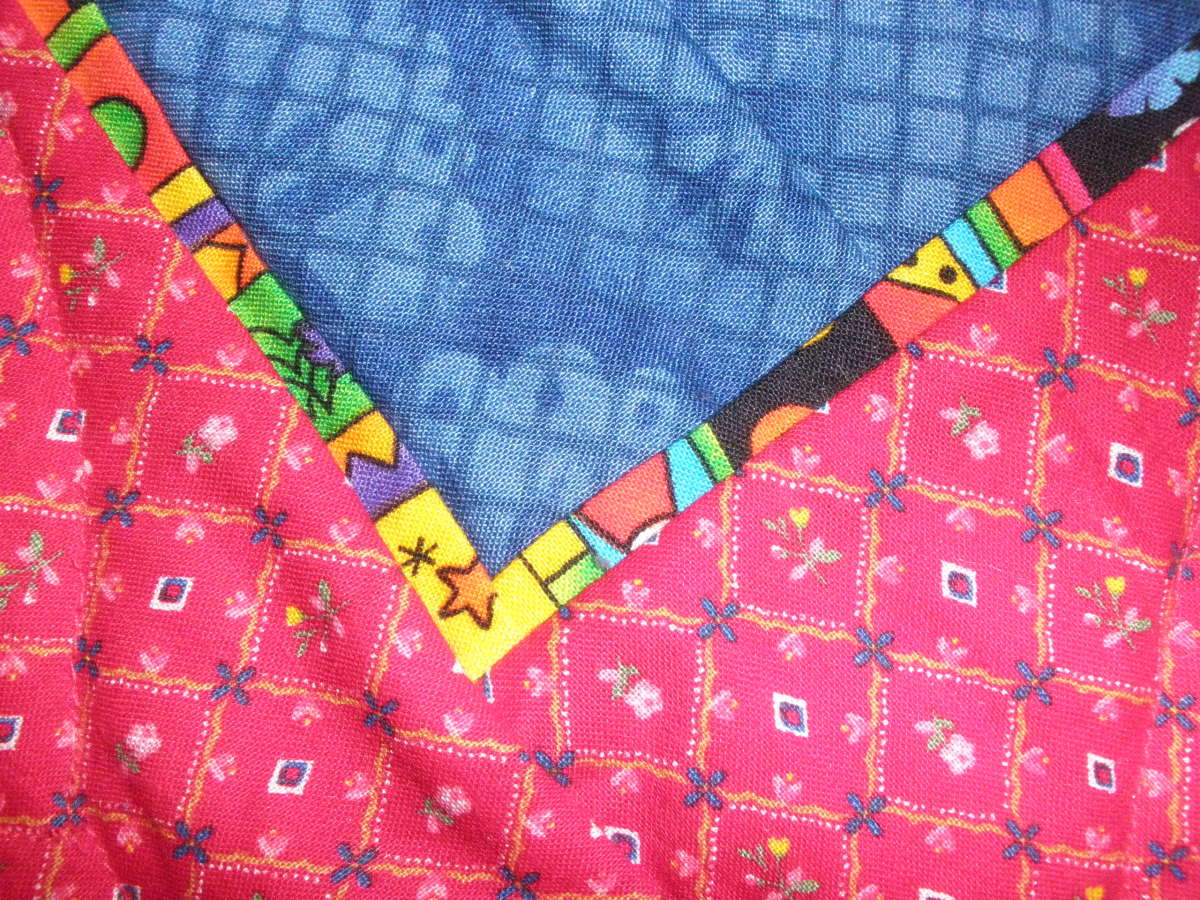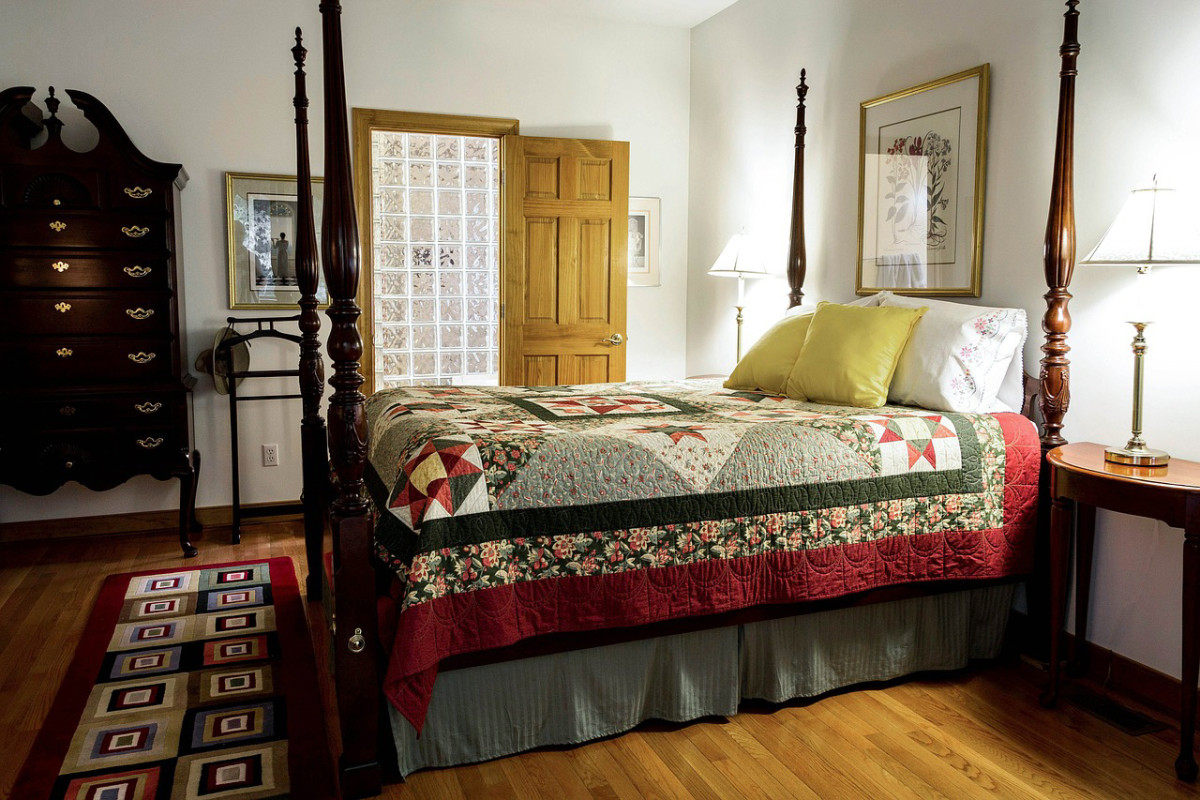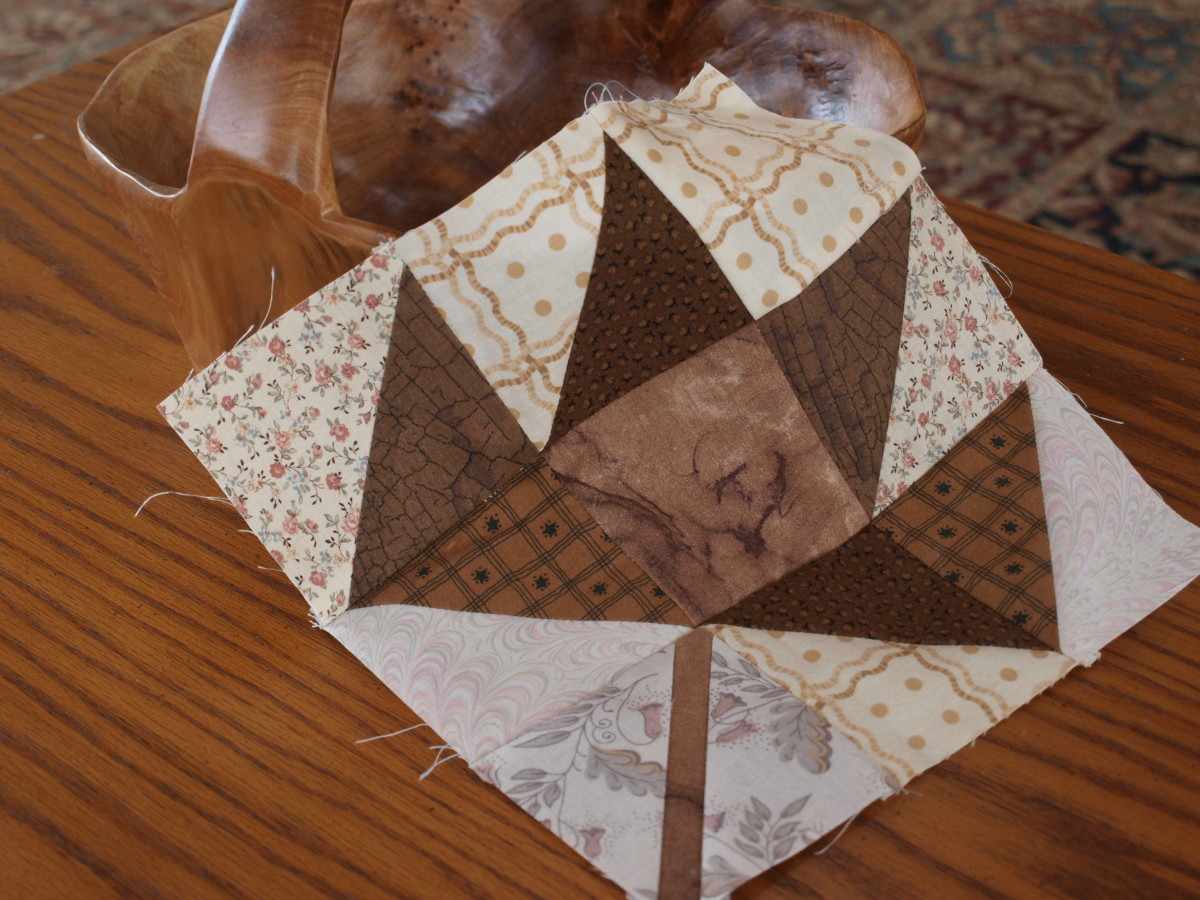How to Create a Beautiful Quilt Backing
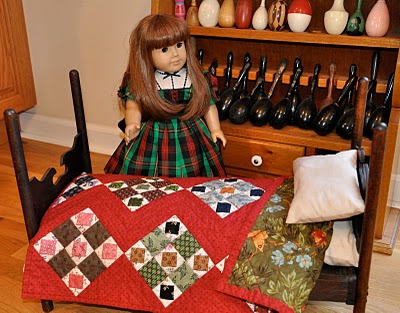
Sneaking a glance at the back side of the quilt
Come on, admit it. After you are finished admiring the front of the quilt, don't you want to take a sneak peek at the back of a quilt? What's hiding back there? Does it look as good as the front of the quilt, or will it show some serious errors the quilter is trying to hide from you?
We are so curious that most quilt shows have white gloved attendants that will show you the back of the quilts that particularly pique our interests.
People do look at the back of a quilt, so when you are choosing your quilt backing, you may want to take these ideas into consideration.
Solid or Print?
You can choose any design on your backing fabric. Many experienced quilters prefer solid or a light fabric so that their quilting stitches will show beautifully on the back of the quilt. Beginners will generally prefer a print that will be able to hide any flaws.
Choosing a Quilt Backing
There are three layers to most quilts, the front of the quilt, which is called the top, the middle layer which is generally the batting or wadding, and the bottom layer which is the back. There are some basic requirements for the back of the quilt.
The main function of the back of the quilt is to help enclose the batting. The backing should be of the same type of fabric as the front. You want the whole quilt to shrink at the same rate to avoid distortion. It should also be the same quality fabric as the front of the quilt. Even though it won't be looked at as much, it will generally get the same amount of wear and tear as the front of the quilt, maybe just a little less. After spending all the time with the front, you don't want the backing to deteriorate before the front.
The backing fabric is initially bigger than the front of the quilt to allow for some shrinkage that happens during quilting, and to provide some insurance to make sure that the entire front of the quilt is backed. You don't want to wind up a couple of inches short, leaving your batting uncovered.
Quilt Backing Fabric from Amazon
How Much Fabric Do You Need for the Back of a Quilt?
The amount of backing fabric you will need depends on how you will finish the quilt. Generally, you take the measurements from the top, and add a few inches per side for the backing.
How many inches? If you are going to send the quilt to be machine quilted on a long arm machine, you will need to follow your machine quilter's requirements. They may ask you to provide 5 or 6 inches on each side beyond the measurements of your top.
If you are going to quilt it yourself on a domestic sewing machine, you will be able to get by with 3 or 4 inches on each side.
If you are planning on using a fold over binding, where you use the backing as the binding by folding it over to the front, you will need 5 to 7 inches beyond the quilt top to do that. I always have leftover backing fabric when I am done making with the quilt, and I just save that for a scrap quilt, so it isn't being wasted. To me and most quilters, having extra fabric is much preferable to not having enough.
The amount of fabric you buy for the back of the quilt will differ, depending on the size of the quilt top, and the amount of extra fabric you want beyond the quilt top. You can use this fabric calculator from Quilter's Paradise to determine how much you need. Please note that this calculator is for the standard size of quilting fabric, and not the wide backing fabric.
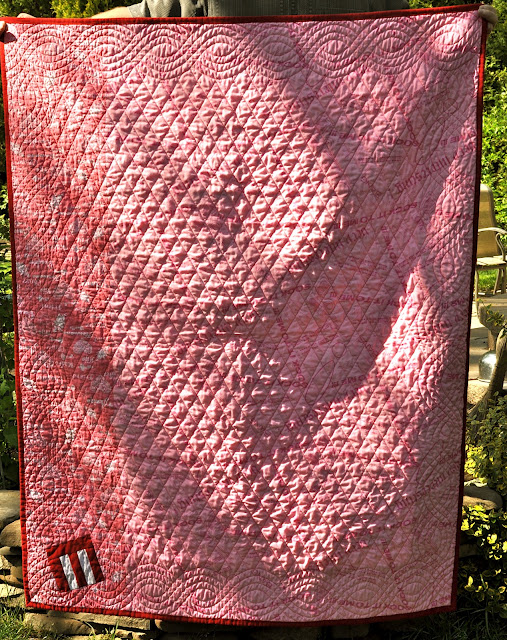
Piecing a Quilt Backing
You can buy fabric that is specially designed for the backing. It is made wider than the standard size of quilting fabric, which is about 40" to 44". Unfortunately, this backing fabric does not come in as big a variety of prints as the standard quilting fabric, and it might be harder to find and more expensive, depending on the availability of quilt shops in your area.
If you don't have fabric that is wide enough, you can piece your backing. Simply trim off the selvage and sew another piece of fabric on the side. You can use the same fabric, a coordinating fabric, or a variety of different fabric. I like to take leftovers from the front of the quilt, and piece them together for the back. In this way, I am sure that the fabric will match the quilt, and I am making good use of the fabric I do have. I also don't have to find a place to store this fabric, or find another use for it.
Since it is just the back of the quilt, and not a lot of people will see it, you can feel free to be creative and combine whatever pieces of fabric you want to use.
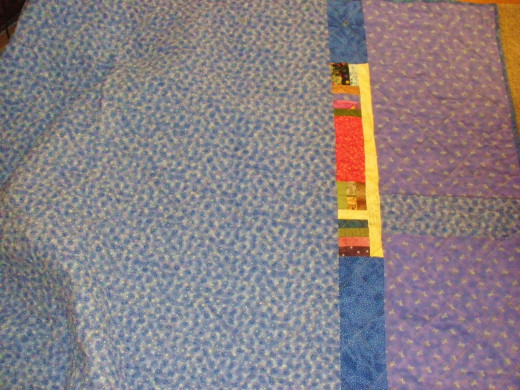
Save Money on Your Quilt Backing
Quilting fabric is expensive, and the back of the quilt is the part that will not be seen very often. To save money, you can buy less expensive fabric for the back. You shouldn't skimp on the quality of the fabric, because you want the quilt to last, but you don't have to pay a designer top dollar for the part of the quilt that not many people will see. You can back your quilt with bleached or unbleached muslin, which does not have a pattern on it at all, or you can use fabric that is no longer popular. One hundred years from now, people are probably not going to know that you used last year's fabric this year.
The back of the quilt is also a good place to use up the fabric you have sitting in your stash that you may not like as much. Use it up, and you can make room for more fabric.
You can also use up any leftover patchwork blocks or strips that were remaining from making the top. Instead of throwing those out or trying to find another use for them, simply add them to the back of the quilt. It makes the quilt more interesting, and you are saving money.
Quilting Without Marking Your Quilt
Marking your quilt for quilting can take a long time, so if you can find a fabric that has an interesting pattern, you may be able to use it as your quilting guide. If you choose a fabric with straight lines like stripes or a plaid, for example, you will be able to quilt from the back of your quilt, following these lines, and not have to mark the top at all. Fabrics with swirls or waves also make great candidates for quilt backs used in this way.
Let's Give Them Something to Talk About
Even though the quilt backing is not something everyone will see, adding a special piece of novelty fabric will really let the personality of the quilter shine through. It adds a touch of whimsy and intrigue. By using a print that showcases the theme of the quilt, you can really make the quilt stand out.
When I thought about writing an article about the backing, I immediately thought of Barb Vedder. She often adds novelty and other creative ideas to make the back of her quilts very interesting. Some of the photos here are of her quilts, but be sure to visit her blog for even more ideas.
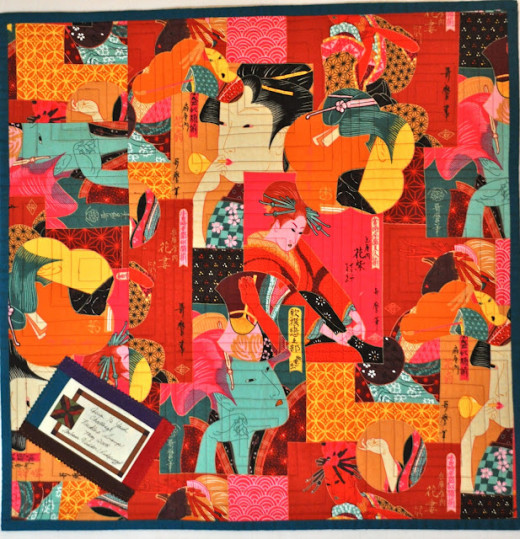
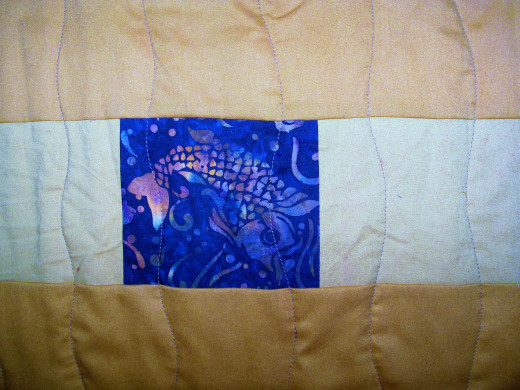
Fun Things to Add To The Back of Your Quilt
Note that you do not have to use a whole piece of expensive novelty fabric for the back. There are many ways you can add interest without a great deal of expense or time.
- Add a touch of whimsy with a small cut of particular section of the fabric, called a fussy cut.
- Embroider a quotation or Bible verse
- appliqué a special symbol that has meaning to you
- leftover blocks from the front of the quilt
- leftover blocks from other quilts
- an envelope or pocket for a secret place to hide a note or emergency cash
- a piece of fabric from clothing that has special meaning
- a note or special wish for the recipient
- quilt label or documentation of the quilter's name and date made
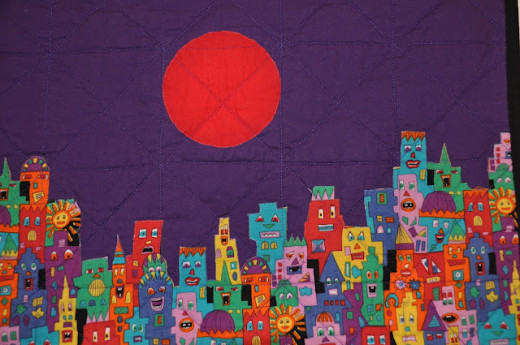
Reversible Quilts
If you have a lot of quilt tops that need quilted, a reversible quilt is a great way to finish them both at the same time. A reversible quilt will take up less space, and can be very convenient. If you make a seasonal quilt, for example, you can simply flip the quilt over to display the next season.
I have also seen reversible quilts that were mirror images of each other at quilt shows, although those would be very difficult to line up correctly.
How to Finish a Quilt Back
Once you have chosen your quilt back, you will need to sandwich the quilt. Find a large surface. A large set of tables at a church or quilt shop works well. Use binder clips to secure the fabric to the table. If you cannot find tables, the floor works as well. I use painters tape to secure the fabric to the floor.
Lay out your backing, right side down, and smooth it out. You want it to be flat and even, without stretching. Secure it with binder clips or painters tape. Put the batting on top of it, and smooth it out. Then lay the top, right side up, and smooth it out. Once you are satisfied that your sandwich is smooth, you can baste it. Use medium size safety pins, or specially designed curved safety pins. You can also baste it by hand using large running stitches.
Quilt as desired. Trim and square up the quilt. Then bind it.
Choosing a Quilt Backing
The back side of the quilt can be a great place to save money and use up old pieces of fabric, or it can be a place to show your personality and whimsy. Whichever you choose, it will showcase your quilting stitches, and help enclose the batting, and let you finish your quilt so that let the top of the quilt get the spotlight.
That is, until someone asks, "What's on the back of the quilt?"
© 2012 Shasta Matova
